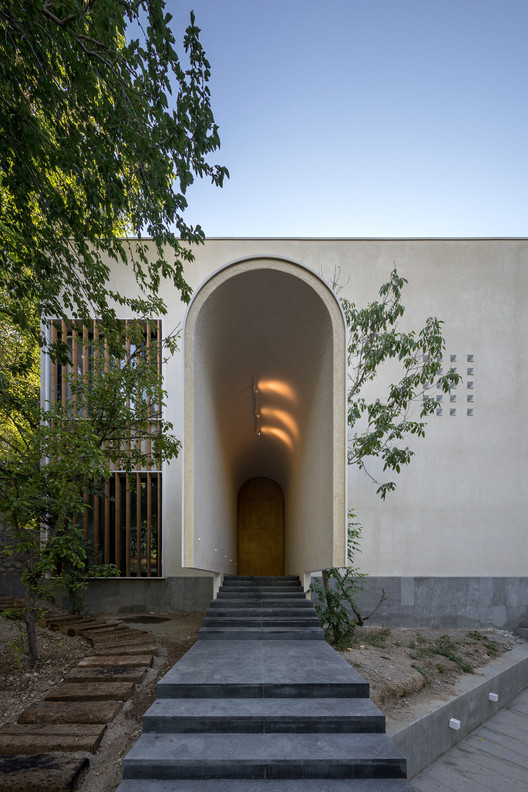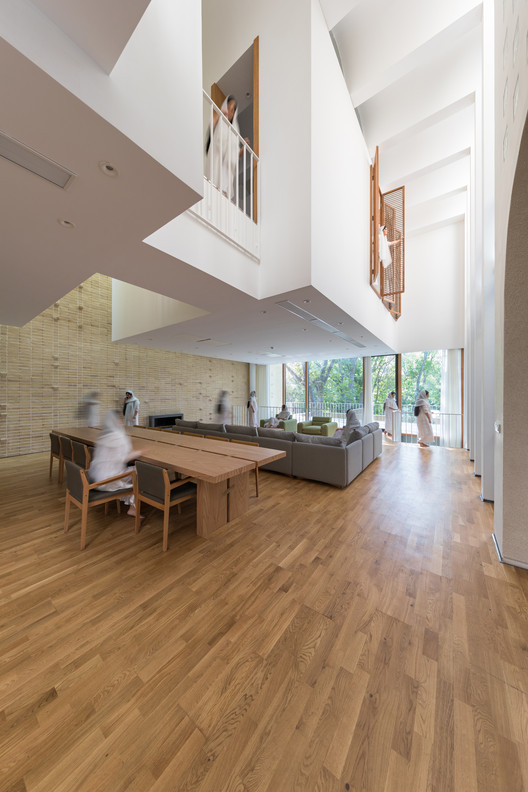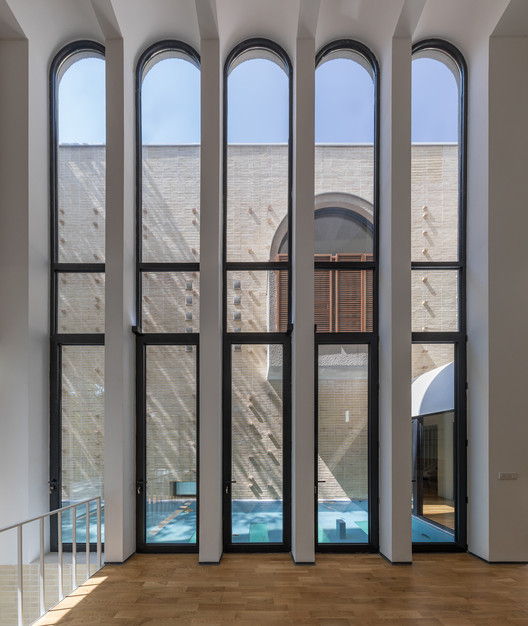
-
Architects: Dida Office
- Area: 890 m²
- Year: 2020
-
Photographs:Mohammad Hassan Ettefagh
-
Manufacturers: Avijeh, Barlinek Wooden Floors, Blum, Bosch, Diba, Hafele, KWC, Keraben, Nooranlighting, PMA, Sakhara, Schniz, Setarehshomal

Text description provided by the architects. Located in one of the 40-year-old urban gardens, this project was defined by the client as a villa with no distinct external appearance and facing, minimum resolution, unspecific form, and attracting the least attention possible. Conversely, the user opts for diverse interior spaces, which maximize the enjoyment of presence in the villa. We tried to challenge this duality—the interior diversity and the exterior simplicity—in the designing process and consider it the basis for the design concept.



























































